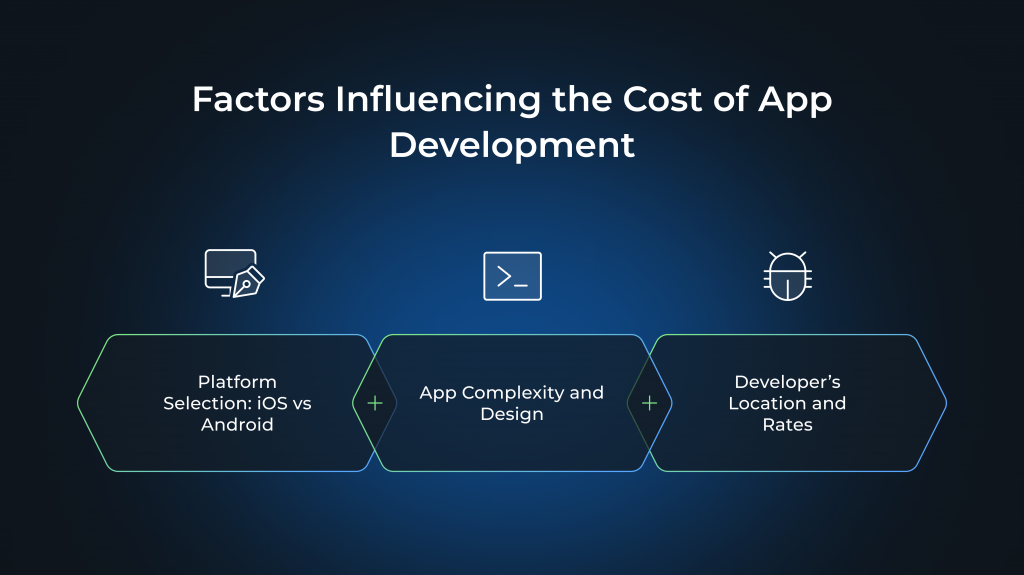Learning a new language has become a popular trend, and language learning apps have revolutionized the way we acquire new skills. With the success of apps like Duolingo, many entrepreneurs and businesses are eager to jump into the language learning app market. But how much does it actually cost to build a language learning app like Duolingo? In this article, we will explore the key factors that influence the cost of app development and provide insights into ways to reduce development costs.
Understanding the Basics of Language Learning Apps
Language learning apps aim to make the process of learning a new language convenient, interactive, and engaging. These apps provide a variety of features and tools that help users enhance their language skills, such as vocabulary exercises, grammar lessons, speaking practice, and progress tracking.
Learning a new language can be a challenging task, but language learning apps have revolutionized the way we approach language acquisition. With just a few taps on our smartphones, we can now have access to a wealth of resources and interactive exercises that make the learning process more enjoyable and efficient.
One of the key advantages of language learning apps is their convenience. Unlike traditional language courses that require physical attendance and fixed schedules, language learning apps allow users to learn at their own pace and in their own time. Whether you’re sitting on a bus, waiting in line, or relaxing at home, you can simply open the app and start practicing your language skills.
Key Features of a Language Learning App
A successful language learning app, like Duolingo, typically includes the following key features:
- Vocabulary exercises and flashcards to improve word recognition
- Grammar lessons and explanations to understand the language structure
- Speaking practice with speech recognition technology
- Listening exercises to improve comprehension skills
- Progress tracking and personalized recommendations
These features work together to create a comprehensive language learning experience. Vocabulary exercises and flashcards help users expand their word bank and improve their ability to recognize and recall words in the target language. Grammar lessons and explanations provide users with a solid foundation in the language’s structure, enabling them to construct sentences and understand the nuances of the language.
Speaking practice is a crucial component of language learning, and language learning apps make it easier than ever to practice speaking skills. With the help of speech recognition technology, users can speak into their devices and receive instant feedback on their pronunciation and intonation. This feature not only helps users improve their speaking skills but also boosts their confidence in using the language in real-life situations.
Listening exercises are another important aspect of language learning apps. By listening to native speakers and engaging with authentic audio content, users can improve their comprehension skills and train their ears to understand the language in different contexts and accents.
Progress tracking and personalized recommendations are essential features that keep users motivated and engaged. Language learning apps track users’ progress and provide them with personalized recommendations based on their performance and learning goals. This personalized approach ensures that users stay on track and continue to make progress in their language learning journey.
Importance of User-Friendly Design
A user-friendly design is crucial for a language learning app to ensure smooth navigation and enhance the user experience. The app should have an intuitive interface that makes it easy to access various features and track progress. Incorporating gamification elements, such as badges and rewards, can also make the learning process more enjoyable and motivating.
When designing a language learning app, developers need to consider the needs and preferences of their target audience. The app should be visually appealing, with clear and concise instructions that guide users through the learning process. The interface should be responsive and easy to navigate, allowing users to switch between different exercises and lessons seamlessly.
Gamification elements, such as badges and rewards, can add an element of fun and competition to the learning experience. By earning badges for completing lessons or reaching certain milestones, users feel a sense of achievement and are motivated to continue learning. Rewards, such as unlocking new levels or accessing bonus content, provide additional incentives for users to engage with the app regularly.
In conclusion, language learning apps have revolutionized the way we learn languages. With their convenient access to a wide range of features and tools, these apps make language learning more accessible, interactive, and enjoyable. Whether you’re a beginner or an advanced learner, a language learning app can be a valuable tool in your language learning journey.
Factors Influencing the Cost of App Development

Before diving into the cost breakdown, it’s important to understand the key factors that influence the overall cost of developing a language learning app.
Developing a language learning app involves various considerations that can impact the cost. Let’s explore some of the factors in more detail:
App Complexity and Design
The complexity of the app’s features and design directly impacts the development cost. Apps with more advanced features, such as speech recognition technology or adaptive learning algorithms, require additional time and expertise to develop. These features involve complex coding and integration with external APIs, which can increase the development time and cost.
Moreover, the app’s design should be visually appealing and user-friendly. This may involve hiring graphic designers and UX/UI specialists who can create an intuitive interface, engaging animations, and an overall seamless user experience. Designing an app that stands out from competitors can attract more users, but it also adds to the development cost.
Platform Selection: iOS vs Android
The choice of platform, whether iOS or Android, can affect the development cost. Developing an app for both platforms simultaneously increases the initial development cost, as it requires separate coding and testing for each platform. However, this approach allows you to reach a wider audience and maximize your app’s potential.
Alternatively, you can opt for a single platform initially and expand to the other platform later as your user base grows. This approach can help reduce the initial development cost but may require additional resources and time in the future to adapt the app for the other platform.
Developer’s Location and Rates
The developer’s location and rates play a significant role in determining the cost of app development. Developers based in regions with higher labor costs, such as North America or Europe, tend to charge more for their services. This is due to the higher cost of living and the expertise they bring to the table.
On the other hand, hiring developers from regions with lower labor costs, such as Southeast Asia or Eastern Europe, can help reduce development costs without compromising on quality. These regions have a pool of talented developers who offer competitive rates, making it an attractive option for cost-conscious app development projects.
It’s important to note that while hiring developers from regions with lower labor costs can save money, it’s crucial to thoroughly evaluate their skills, experience, and portfolio to ensure they can deliver a high-quality product.
By considering these factors and making informed decisions, you can effectively manage the cost of developing a language learning app while delivering a valuable and engaging experience to your users.
Breakdown of the Development Process
Now that we have a better understanding of the factors influencing app development costs, let’s dive into the development process itself.
The development process is a complex and multifaceted journey that requires careful planning, meticulous design, and rigorous testing. Each phase plays a crucial role in bringing an app to life and ensuring its success in the market.
Planning and Research
The planning and research phase sets the foundation for successful app development. It is during this phase that developers and stakeholders delve deep into understanding the market landscape and identifying the target audience’s needs and preferences. Market research is conducted to gather valuable insights into user behavior, competitor analysis, and emerging trends.
Once the market research is complete, the next step is to outline the app’s specifications. This involves defining the app’s features, functionalities, and user interface. It is essential to align these specifications with the target audience’s expectations to ensure the app’s success.
Furthermore, creating a development roadmap is an integral part of the planning and research phase. This roadmap outlines the timeline, milestones, and resources required for the app’s development. It serves as a guiding document for the entire development team, ensuring that everyone is on the same page and working towards a common goal.
Design and Prototyping
The design and prototyping phase brings the app’s visual elements to life. It is during this phase that graphic designers and UX/UI specialists work collaboratively to create wireframes, graphical assets, and interactive prototypes.
Wireframes are skeletal representations of the app’s interface, showcasing the layout and structure of each screen. They provide a visual blueprint that helps stakeholders visualize the app’s flow and navigation. By reviewing and iterating on the wireframes, any necessary adjustments can be made before moving forward with development.
Once the wireframes are finalized, graphic designers step in to create visually appealing graphical assets. These assets include icons, buttons, images, and other visual elements that enhance the app’s aesthetics and user experience.
Interactive prototypes are then developed to simulate the app’s functionality and user interactions. These prototypes allow stakeholders to experience the app’s interface firsthand and provide valuable feedback for further improvements.
Coding and Testing
Coding and testing are the core activities in app development. Experienced developers write clean and efficient code that aligns with industry best practices. They use programming languages, frameworks, and libraries to bring the app’s functionalities to life.
Throughout the coding process, developers follow a systematic approach, breaking down the app’s requirements into smaller, manageable tasks. This allows for better collaboration and ensures that the development process remains organized and efficient.
Rigorous testing is conducted throughout the development process to identify and fix any bugs or issues. Testing includes functional testing, which verifies that each feature of the app works as intended. Usability testing is also performed to assess the app’s user-friendliness and ease of navigation. Compatibility testing ensures that the app runs smoothly across various devices and platforms, providing a seamless experience for all users.
By investing time and effort in the coding and testing phase, developers can ensure that the app meets the highest quality standards and delivers a flawless user experience.
Additional Costs to Consider
In addition to the development process, there are other costs to consider when building a language learning app.
When it comes to app development, it’s important to think beyond just the initial creation of the app. There are several ongoing costs that you need to take into account to ensure the long-term success of your language learning app.
App Maintenance and Updates
Once the app is launched, ongoing maintenance and updates are essential for its success. This includes bug fixes, performance improvements, and compatibility updates to ensure that the app remains functional and secure. Budgeting for regular maintenance and updates is crucial for the long-term success of the app.
App maintenance involves a dedicated team of developers who will be responsible for monitoring the app’s performance, addressing any issues that arise, and implementing updates to keep the app running smoothly. This ongoing support is necessary to provide users with a seamless experience and to maintain the app’s reputation in the market.
Marketing and Promotion
Marketing and promotion are crucial for attracting users to your language learning app. It’s important to allocate a budget for app store optimization, digital marketing campaigns, social media advertising, and other promotional activities to reach your target audience effectively.
App store optimization involves optimizing your app’s listing on various app stores to improve its visibility and discoverability. This includes optimizing keywords, creating compelling app descriptions, and utilizing screenshots and videos to showcase the app’s features.
Digital marketing campaigns can help create awareness about your language learning app and drive user acquisition. This can include paid advertising on search engines, social media platforms, and other relevant websites. Additionally, leveraging social media channels and influencers can help generate buzz and attract potential users.
In-app Purchases and Monetization Strategies
Monetization is an important aspect of app development. Incorporating in-app purchases, subscription plans, or targeted advertisements can help generate revenue from your language learning app. Consulting with experts in app monetization can help you choose the right strategy for your app and increase its revenue potential.
In-app purchases can offer users additional features, content, or premium access in exchange for a fee. This can include access to advanced language courses, personalized learning plans, or exclusive study materials. Subscription plans, on the other hand, can provide users with ongoing access to premium content and features for a recurring fee.
Targeted advertisements can also be integrated into the app to generate revenue. This can involve partnering with relevant advertisers or ad networks to display ads that are tailored to the app’s audience. However, it’s important to strike a balance between monetization and user experience to ensure that the ads do not disrupt the learning process.
By considering these additional costs and incorporating them into your budget, you can ensure that your language learning app not only gets developed but also thrives in the competitive app market. Remember, building a successful app is not just about the development process, but also about ongoing maintenance, effective marketing, and strategic monetization.
How to Reduce App Development Costs
Now that we’ve covered the various costs involved in building a language learning app, let’s explore some strategies to reduce app development costs without compromising on quality.
Developing an app can be an expensive endeavor, but there are ways to cut costs without sacrificing the end product. By implementing the following strategies, you can create an app that meets your users’ needs while staying within your budget.
Prioritizing Essential Features
One way to reduce development costs is to prioritize essential features. By focusing on the core functionality of the app, you can launch a minimum viable product (MVP) and gather user feedback. This allows you to validate your app idea and implement additional features based on user needs and preferences in future updates.
For example, if you’re building a language learning app, you might prioritize features such as interactive lessons, vocabulary quizzes, and progress tracking. These features are crucial for the app’s functionality and can be developed first, while other non-essential features can be added later.
By taking an iterative approach to app development, you can save time and money by avoiding unnecessary features that may not be well-received by your target audience.
Outsourcing vs In-house Development
Outsourcing app development to a trusted software development company, like WeSoftYou, can significantly reduce costs. From our experience, outsourcing allows you to tap into a pool of highly skilled developers at competitive rates, eliminating the need to hire an in-house development team and incur additional expenses such as office space and hardware.
When outsourcing app development, it’s important to choose a reputable company that has experience in your industry and can deliver high-quality results. By leveraging the expertise of external developers, you can save both time and money while ensuring that your app meets the desired standards.
However, it’s important to maintain clear communication and establish a strong working relationship with the outsourced team. Regular updates, feedback sessions, and milestone reviews can help ensure that the development process stays on track and aligns with your vision.
Utilizing App Development Tools and Platforms
Using app development tools and platforms can also help reduce costs. These tools provide pre-built components and templates that can be customized to fit your app’s requirements, saving both time and development costs. However, it’s important to ensure that the chosen tools and platforms align with your app’s long-term scalability and maintenance needs.
For instance, frameworks like React Native and Flutter allow developers to build cross-platform apps, which can save time and effort compared to developing separate apps for different operating systems. Additionally, cloud-based platforms like Firebase provide backend services and infrastructure, reducing the need for extensive server setup and maintenance.
While utilizing these tools can be cost-effective, it’s crucial to consider the long-term implications. Ensure that the chosen tools and platforms have a strong community support, regular updates, and a track record of reliability. This will ensure that your app remains stable and scalable as it grows.
By prioritizing essential features, considering outsourcing options, and utilizing app development tools and platforms, you can reduce app development costs without compromising on quality. Remember, the key is to strike a balance between cost savings and delivering a valuable app that meets the needs of your target audience.
Conclusion: Is Building a Language Learning App Worth It?
In conclusion, building a language learning app can be a rewarding venture, both intellectually and financially. However, it’s crucial to carefully evaluate the costs involved and develop a well-thought-out development strategy. We at WeSoftYou, a software development company with a proven track record in building successful language learning apps, can assist you in evaluating your idea and provide a free consultation or project estimation tailored to your needs. Don’t hesitate to reach out to us and take the first step towards building your own language learning app.
FAQ
The development time depends on various factors, such as app complexity, the number of features, and the scale of the project. However, on average, it can take anywhere from six to twelve months to develop a language learning app like Duolingo.
The cost of maintaining a language learning app varies based on the scale and complexity of the app. It typically includes expenses for server hosting, bug fixes, updates, and regular monitoring. As a rough estimate, the maintenance cost can range from 20% to 30% of the initial development cost per year.
Absolutely! A well-designed language learning app like Duolingo can support multiple languages. By incorporating language-specific content and exercises, you can cater to a broader audience and enhance the learning experience.
Yes, you can add customized features to the app based on your specific requirements. Our team of experienced developers can work closely with you to understand your vision and implement the features that align with your business goals.





















